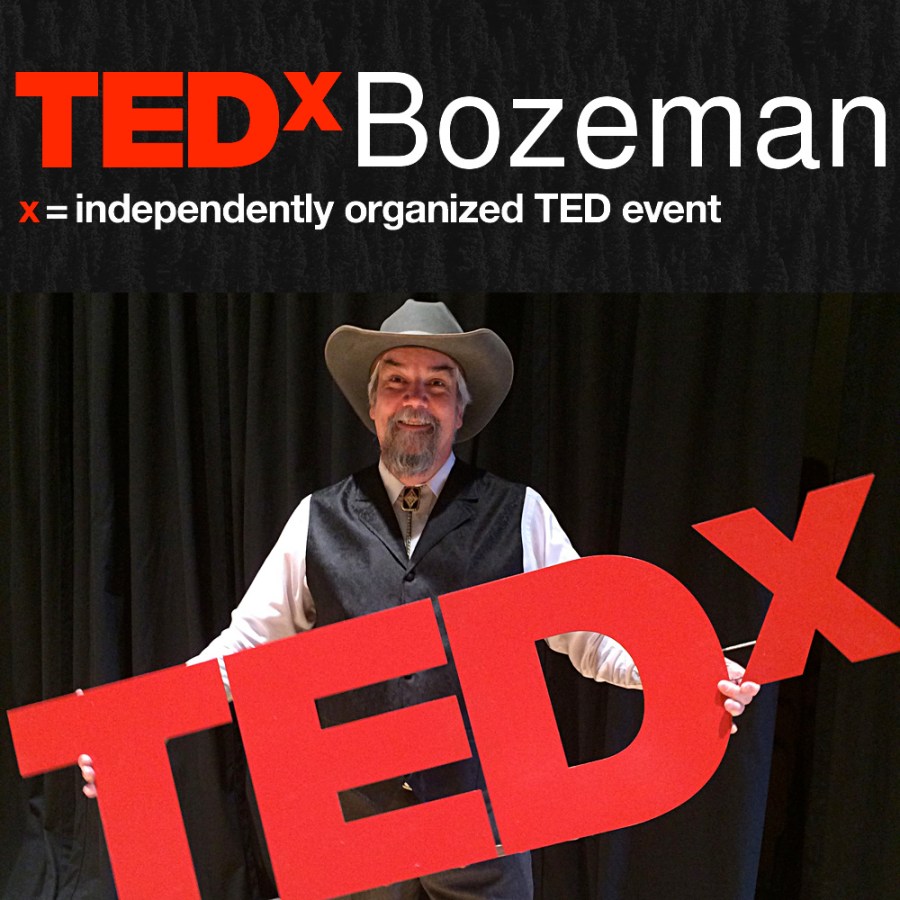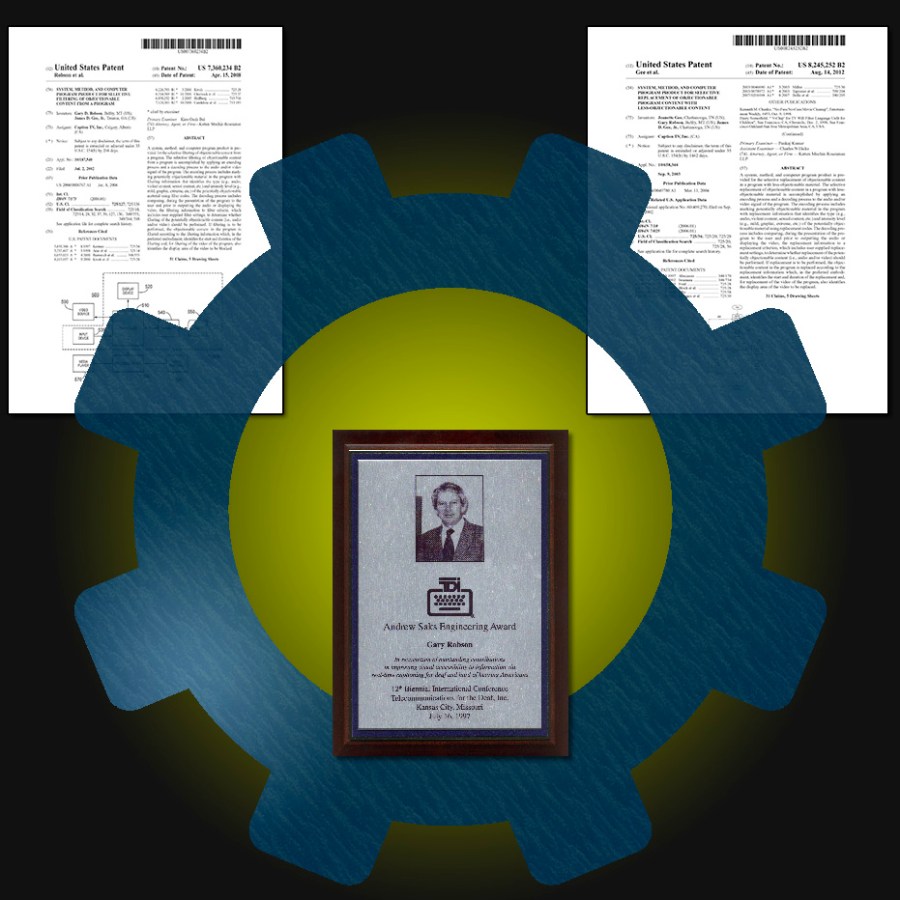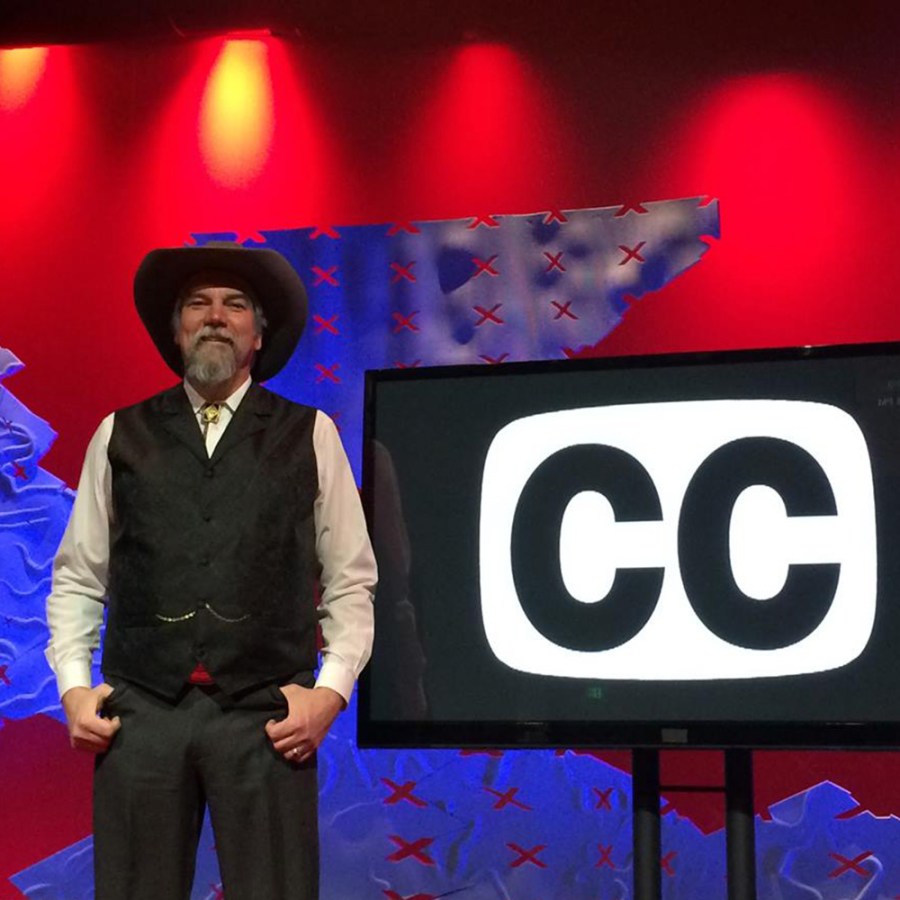Closed captioning has been a big part of my life. I’ve acted as a developer, writer, advocate, volunteer, and consultant in the field. My website will never be a definitive compilation of my captioning work (that’s what the books are for), but this page will tie together some of the captioning resources I’ve had a hand in.

In this talk, titled “Does Closed Captioning Still Serve Deaf People,” I addressed quality issues, caption law, and the mainstreaming of television captioning.

I’ve written three books about closed captioning. The Closed Captioning Handbook is the most recent and the most comprehensive.

A good chunk of my career centered around designing closed captioning software and equipment. This is also where you can find my patents and TDI award information.



I recently filed several complaints with the FCC on closed captioning of several television brands. My primary concern is with displays of fast dialog that is primarily found on talk shows, news and live sports. When dialog is fast, there are often three lines of display (but sometimes, only two lines). My Sony and Sanyo show the bottom line scrolling up from the bottom to the middle and then to the top–making reading comparatively easy to follow (also found on Vizio sets). I recently purchased a Sceptre (since returned) and a Toshiba. With these manufacturers, the captioning is much more difficult to follow because of the display. Unlike the “good” captioning sets, the Sceptre and Toshiba do not have captioning lines that scroll up from the bottom. Instead, the bottom line disappears and then reappears as the middle line. Then at some point, the middle line disappears and reappears as the top line. This provides kind of a jumpy motion where one must focus very hard on keeping up at all times, otherwise, one loses part of the dialog. And sometimes, a line may only flash one word (which happens when the word is followed by a period) and disappear very quickly before reappearing higher up. This means the caption reader has to focus a lot harder to keep up with the program. With a side by side comparison with my Sony and Toshiba, I found the Toshiba on a two line display (two lines display and then disappear with no rotating upwards) oftentimes cut off about 4 letters on the second line that the Sony did not have a problem with. The Toshiba put captions almost in the middle of a football game (CBS) causing what I would call blockage. The Sony kept them higher, but still they should have been a little bit more out of the way. The aging Sanyo kept the football captions at the very top where they were ideally located. The Sceptre was especially irritating. Their standard caption letters were tiny and just about useless. Their “large” letters only reached the size of standard letters found on other sets. So, from what I can see is that the cheaper sets out there are a bad investment for people needing closed captioning. Are there not standards out there to make the manufacturers of the cheaper set put in better captioning? How can we know what sets have good captioning and bad captioning? Best Buy is the only big company that I know of that can hook a television to an antenna to have the caption tested in the store. One cannot generally know anything helpful on the sets sold at Walmart and Target since they can only test the captioning on internet driven tapes that largely exclude fast-dialog shows where the big problems occur.
Can you just have a certification from a court reporting program or do you have to have a bachelor’s degree?
Everything is different based on where you are. Each country handles it differently, and if you’re in the U.S., each state has different rules. In the states that require CSR certification, it’s not the school you went to or the degree you earned that matter; it’s whether you pass the state exam.
Pardon me if this post is not a direct reply to the preceding comment, but at least it’s very much on the same subject, and I’m struggling to find a surer way to get your (hopefully favorable) attention.
My name is Brian Quass, veteran captioner and founder of CaptionsForTheWeb.com.
I wanted to enlist your help — or at least that of your readers — in organizing a simple YouTube protest.
I have, over the past year, wasted my time (and money) attempting to get America’s major non-profit organizations (and a few big for-profit companies like Pepsico and Walmart) to properly caption their Internet videos.
Every single one of them has stonewalled me. They not only refused to intelligibly caption their YouTube videos, but they refused to even TALK to me about doing so, this despite my repeated offers to meet with them in person and discuss funding options — not to mention the SEO value of the text-searchable video archives that I offered to create for them.
I also pointed out that many of their auto-generated YouTube captions were obscene.* A few organizations quietly removed the specific obscenities that I pointed out (like the “F” words in the auto-generated captioning for Habitat for Humanity, Red Cross, and United Way videos) — without thanking me, of course — but none of them bothered to check their other videos for more auto-captioned obscenities, of which there were plenty, let alone reconsider their policy of not providing intelligible Internet captioning for the deaf.
Result: 90% of major American non-profits had no intelligible Internet captioning a year ago and that number holds today.
It’s no better in the for-profit world, either.
As recently as yesterday, I spoke to the Digital Content Sr. Manager at Walmart-U.S.A., a certain Emily Schmid, who very curtly informed me that Walmart-USA had no “current interest” in captioning (whereas the YouTube videos for Walmart-Canada appear to be totally captioned — with REAL captions — btw).
Such anti-captioning sentiments are not limited to the corporate world, either.
Several months ago, the PR Director of the SETI Institute told me that her organization had “much more important” things to do than caption their YouTube videos — this despite my effort to meet with them in person and create a corporate funding scheme to pay for my captioning services. (SETI videos would be so much more valuable, too, for all site visitors with the text-searchable video archive with which I could have provided them.)
I believe that this situation can be changed for the better, however, if deaf video viewers begin posting their displeasure with this status quo in the YouTube comment forms of any of these organizations’ videos: those videos that are either not captioned at all or else are provided only with gibberish, punctuation-free, auto-generated captions.
So, if someone reads this post of mine and wants to get started protesting, why not post your complaints beneath the non-captioned (or else gibberish-captioned) YouTube videos of the following organizations, all of which (as of April 12, 2016, at least) have no intelligible captioning for their Internet videos and, what’s more, refuse to even talk to me about providing any — and refuse to even acknowledge my emails and phone calls on the subject:
The AARP, SETI, WalMart, Pepsico, Habitat for Humanity, and the United Way.
The list goes on and on, but the above-mentioned organizations are some of the most notable offenders.
Meanwhile, I invite anyone interested in promoting such a YouTube protest (you, too, Gary!) to contact me at quass@quass.com with ideas that will help us get the protest ball rolling. It’s an easy protest, in principle, though: no massing in the streets, no writing letters to editors. It just involves adding your protest comments to some of the many non-captioned (or gibberish auto-captioned) videos on YouTube.
I’ve spent a year trying to get these caption-hating organizations to listen to me. But they obviously will not. So now I think it’s time for the deaf community itself to speak up. If enough of them do so, then these recalcitrant organizations may begin to reconsider their current deaf-unfriendly stance online.
Thank you!
Brian B. Quass
PS In a sense, I don’t fully blame these companies. I believe captioning should be the responsibility of video producers, not their clients. These same producers who spend thousands on cinematography and voice-over will not even deign to spend so much as ONE SINGLE PENNY on captioning. Instead, they foist off the inevitable captioning requirements on their video clients.
But that’s another story altogether. Given the current status quo for captioning in America, we can only complain to the video publishers and video owners when it comes to a lack of intelligible captioning online.
For those interested in my thoughts on a new captioning paradigm, however — one in which captioning is a real “production value” and hence a quality product — please visit my various caption-related websites online, starting at http://www.quass.com/caption_related_articles.php.
*Kids’ YouTube videos, by the way, are loaded with obscenities in their auto-generated captions — but very few video publishers will even acknowledge — let alone act on — my requests to have those obscenities removed.
I have more than once seen videos in which the star of “Hello Kitty” uses the “F” word (according to the error-riddled auto-generated caption text). The sites that host such kids videos have millions of subscribers, but they will not even acknowledge (let alone act on) my request for them to remove such obscenities from their gibberish auto-captions (this despite the fact that such sites almost always profit off of their videos by showing Google ads both before and during them).
It’s as if these YouTube video publishers don’t think that deaf kids are real children and that they can therefore be subjected to all the words (and blatant sexual innuendo) that the video publisher wouldn’t want his or her own hearing children to be subjected to.
Hello, Brian.
I haven’t been working in the captioning field for quite a while now. I’m more than happy to leave your comment here so that people can see it and follow your links, but I’m not sure how much other help I can be.
-=- Gary -=-
Hi, I was wondering what schools are considered “credible” in the closed captioning field? I see a lot of online universities but wonder if they are taken seriously. Thank you in advance for any info!
Donna, I have been out of the training side of captioning for quite a while, so I really can’t speak about specific schools.
If you’re talking about realtime stenocaptioning, contact NCRA (http://www.ncra.org/), as they work a lot with training programs.
If you’re talking about speech-based realtime captioning (“voice writing”), contact NVRA (https://www.nvra.org/).
If you’re interested in offline (studio) captioning, I don’t know of any organization that rates or certifies training programs. If you have outstanding language skills, coupled with a degree in something like English or Journalism, most offline captioning companies will provide training on their specific tools.
Good luck!